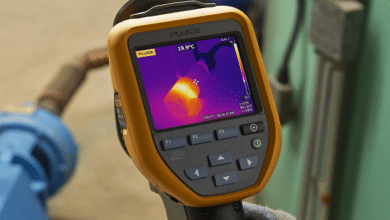Best Practices for Effective Active Directory Monitoring

Active Directory (AD) is a critical component in many IT infrastructures. It manages user accounts, permissions, and network resources, making it essential for maintaining security and efficiency in an organisation. Effective monitoring of Active Directory helps in identifying issues before they become critical problems. In this article, we will explore the best practices for effective Active Directory monitoring, ensuring your system remains secure and performs optimally.
Understanding Active Directory Monitoring
Before diving into the best practices, it’s important to understand what Active Directory monitoring entails. Monitoring involves keeping an eye on the performance, security, and health of the Active Directory environment. This includes tracking login attempts, changes in user permissions, replication status, and overall system performance.
Effective monitoring helps in detecting unusual activity, potential security threats, and performance bottlenecks. It ensures that your AD environment remains stable and secure, and helps in troubleshooting issues quickly when they arise.
1. Establish Clear Monitoring Objectives
The first step in effective monitoring is to establish clear objectives. Determine what you need to monitor and why. Common objectives include:
- Security Monitoring: Detecting unauthorized access attempts or changes in user permissions.
- Performance Monitoring: Ensuring that the AD servers and services are performing optimally.
- Health Monitoring: Checking the overall health of the AD environment, including replication and database integrity.
By defining your monitoring objectives, you can focus on the most critical aspects of your Active Directory environment and ensure that your monitoring efforts are aligned with your organisational goals.
2. Implement a Comprehensive Monitoring Strategy
A comprehensive monitoring strategy involves using various tools and techniques to keep track of different aspects of Active Directory. Here are some key components to include in your strategy:
- Use Monitoring Tools: Employ specialised monitoring tools that provide real-time visibility into the health and performance of your AD environment. Tools like SolarWinds, Quest Active Directory Manager, and Microsoft’s own tools can be very effective.
- Set Up Alerts: Configure alerts to notify you of any critical issues or anomalies. Alerts can be set for specific events such as failed login attempts, replication errors, or changes in user permissions.
- Regular Reporting: Generate regular reports to review the status of your Active Directory environment. Reports can help in identifying trends, potential issues, and areas for improvement.
3. Monitor Active Directory Performance
Performance monitoring is crucial for ensuring that your Active Directory environment operates smoothly. Key performance indicators (KPIs) to monitor include:
- Server Health: Check the health of your AD servers, including CPU usage, memory usage, and disk space.
- Replication Status: Monitor the replication status between Domain Controllers to ensure that changes are being propagated correctly.
- Login Times: Track login times to identify any slowdowns or performance issues.
By keeping an eye on these performance metrics, you can proactively address any issues before they affect your users.
4. Track Security Events
Security monitoring is essential for protecting your Active Directory environment from potential threats. Key security events to monitor include:
- Failed Login Attempts: Track failed login attempts to detect potential brute-force attacks or unauthorized access attempts.
- Changes in User Permissions: Monitor changes in user permissions and group memberships to ensure that they align with your organisational policies.
- Account Lockouts: Watch for account lockouts to identify potential security breaches or misconfigurations.
Effective monitoring of these security events helps in detecting and responding to threats quickly, reducing the risk of security breaches.
5. Regularly Review and Update Monitoring Policies
Monitoring policies should not be static. Regularly review and update your monitoring policies to ensure that they remain effective. This involves:
- Assessing New Threats: Stay informed about new security threats and update your monitoring policies accordingly.
- Adapting to Changes: Adjust your monitoring practices based on changes in your IT environment, such as new applications or changes in user roles.
- Feedback and Improvement: Gather feedback from your IT team and users to identify areas for improvement in your monitoring practices.
6. Leverage Active Directory Monitoring Tools
Active Directory Monitoring tools play a crucial role in ensuring effective monitoring. These tools provide comprehensive insights into the health, performance, and security of your AD environment. Key features to look for in monitoring tools include:
- Real-Time Monitoring: Ensure that the tool provides real-time monitoring capabilities to detect issues as they occur.
- Customisable Alerts: Choose a tool that allows you to configure custom alerts based on your specific needs.
- Reporting Capabilities: Opt for tools that offer detailed reporting features to help you review and analyse monitoring data.
Using specialised tools for Active Directory Monitoring can greatly enhance your ability to manage and maintain a healthy AD environment.
7. Conduct Regular Audits and Reviews
Regular audits and reviews are essential for maintaining the effectiveness of your Active Directory monitoring practices. Audits help in identifying any gaps or weaknesses in your monitoring strategy, while reviews allow you to assess the overall performance and security of your AD environment.
During an audit, check for:
- Compliance: Ensure that your monitoring practices comply with organisational policies and regulatory requirements.
- Configuration: Verify that your monitoring tools and policies are correctly configured.
- Incident Response: Review past incidents to identify any areas for improvement in your monitoring and response strategies.
Regular audits and reviews help in keeping your monitoring practices up to date and effective.
8. Train Your IT Team
Proper training is crucial for ensuring that your IT team can effectively use monitoring tools and respond to issues. Training should cover:
- Tool Usage: Provide training on how to use monitoring tools and interpret the data they provide.
- Incident Response: Train your team on how to respond to alerts and incidents, including troubleshooting and remediation procedures.
- Best Practices: Educate your team on best practices for Active Directory monitoring and management.
Well-trained IT staff are better equipped to handle monitoring tasks and address issues efficiently.
9. Implement a Backup and Recovery Plan
Even with effective monitoring, issues can still arise. Therefore, it’s important to have a backup and recovery plan in place. This plan should include:
- Regular Backups: Schedule regular backups of your Active Directory environment to ensure that you can recover in case of data loss or corruption.
- Recovery Procedures: Develop and document recovery procedures to restore your AD environment in the event of a failure or disaster.
- Testing: Regularly test your backup and recovery procedures to ensure that they work as expected.
A robust backup and recovery plan helps in minimising downtime and ensuring business continuity.
10. Stay Updated with Best Practices and Technology
The field of Active Directory monitoring is constantly evolving, with new best practices and technologies emerging regularly. Stay updated by:
- Following Industry News: Keep up with the latest developments in AD monitoring and security.
- Participating in Forums: Join forums and communities where IT professionals discuss AD monitoring and related topics.
- Attending Training: Attend training sessions and webinars to learn about new tools and techniques.
Staying informed ensures that you can continuously improve your monitoring practices and adapt to changes in the technology landscape.
Conclusion
Effective Active Directory monitoring is crucial for maintaining the security, performance, and health of your IT environment. By implementing these best practices, you can ensure that your AD environment remains stable and secure. Establish clear monitoring objectives, use comprehensive tools and techniques, and regularly review and update your practices to keep your Active Directory environment running smoothly. With these strategies in place, you’ll be well-equipped to handle any issues that arise and ensure the continued success of your organisation’s IT infrastructure.




